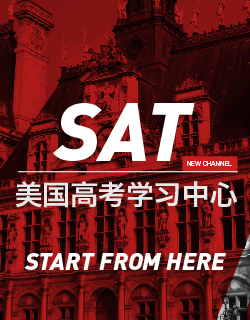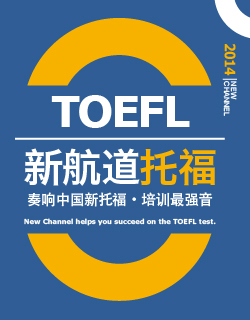托福TPO41听力题目+答案+MP3音频
Conversation1
QUESTIONS
1. What does the professor talk about with the man?
a. Reasons the man should work at the field station next summer instead of working independently
b. Reasons the man should change the focus of his independent study project
c. Projects that the man has permission to work on next summer
d. Whether the man would be willing to cooperate on a project with another student
2. What does Professor Garfield suggest the student do during the spring term?
a. Take a particular class
b. Modify his research topic
c. Pay the field-station program fee
d. Begin collecting data
3. What do the student and John Arnold have in common?
Click on 2 answers.
a. They were both on the waiting list for the summer field program.
b. They will both be doing research involving salt marshes.
c. They often volunteer to help restore salt marshes.
d. They live in the same university dormitory.
4. What does the professor say is the main topic of John Arnold’s research?
a. Establishing size recommendations for salt marsh habitats
b. The relationship between bridge size and the flow of tidal waters
c. How the vegetation of coastal habitats is affected by the restoration of salt marshes
d. Ways of assessing levels of stress on salt-marsh habitats
5.What can be inferred about the student when he says this:
a. He cannot participate at the field station because of a prior commitment.
b. He is unsure if he will earn enough course credits before the summer.
c. He prefers to do the independent study instead of working at the field station
d. He thinks he may not have enough time to complete the required work over the summer.
Conversation2
QUESTIONS
1. What are the speakers mainly discussing?
a. The procedures for applying for different types of scholarships
b. Where the man must go to submit his financial-aid application
c. How students can get help paying their tuition
d. Various organizations that offer work-study programs
2. What is the woman’s opinion of the work-study program?
a. It does not provide as much financial flexibility as a regular job does.
b. It is more difficult to apply for than other types of financial aid.
c. It should offer more jobs that would appeal to dental students.
d. It should allow students to choose where they want to work.
3. Why does the woman mention civic clubs, foundations, and large corporations?
a. To suggest organizations the man should visit to learn about scholarships
b. To give some examples of organizations that offer scholarships
c. To explain why some scholarships are very competitive
d. To point out that it is appropriate to use scholarship money from multiple sources
4. Why does the woman ask the student about his career plans?
a. She might be able to help him find a job related to the profession he is pursuing.
b. Some scholarships are connected to particular fields of study.
c. He cannot receive financial aid without having a career plan.
d. She wants to find out which campus library is best equipped to help him.
5. Why does the woman suggest that the student speak to a university librarian?
a. A librarian might have more time to help the student than she does.
b. Librarians work hard to maintain a complete listing of financial-aid resources.
c. Librarians are trained to help students fill out a variety of applications.
d. A librarian could help the student find the information he is looking for more quickly.
Lecture1(Environmental Science)
QUESTIONS
1. What is the lecture mainly about?
a. The growth rates of plants in different geographical regions
b. Different ways that plants have adapted to desert environments
c. The different mechanisms that plant roots use to absorb water
d. Different kinds of succulent plants
2. What are two features of succulent plants that help them survive in deserts?
Click on 2 answers.
a. Succulent plants store water in their leaves and stems.
b. Succulent plants become dormant until the next rainfall.
c. Succulent plants have short stems.
d. Succulent plants have few leaves.
3.Why does the professor mention bears?
a.To remind students of information from a previous lecture
b.To point out a feature common to all desert plants
c.To reinforce a point about drought-tolerant plants
d.To help students understand the concept of adaptation
4. What is one ability that drought-tolerant plants have that succulent plants do not have?
a. a. The ability to absorb water from dry soil
b. The ability to absorb water through their leaves
c. The ability to prevent moisture from being lost through their leaves
d. The ability to shed leaves
5.Why can annual plants grow in a desert even after a year of no rainfall?
a. Annual plants have an extensive root system that can absorb water from far away.
b. Annual plants produce seeds all year long.
c. Seeds of annual plants can store water for a long time.
d. Seeds of annual plants can survive in the ground for a long time without water.
6. Why does the professor say this :
a. To correct a previous statement
b. To acknowledge a potentially surprising fact
c. To anticipate the types of questions that students might have about the topic
d. To make sure that students are paying attention
Lecture2(united States History)
QUESTIONS
1. What is the lecture mainly about?
a. The growth and influence of historical institutions in the early United States
b. Facts and myths about Christopher Columbus
c. New information about events that occurred during Columbus’ explorations
d. How Columbus' story was used to help create a national identity for the United States
2. According to the professor, why did John Pintard promote the commemoration of the three hundredth anniversary of Columbus' landing?
a. To encourage patriotism
b. To demonstrate his own wealth and influence
c. To lessen the influence held by the leaders of the American revolution
d. To correct what he claimed were mistaken beliefs about Columbus
3. What were two contributing factors to the selection of Columbus as a United States national hero?
Click on 2 answers.
a. His writings were popular at the time
b. He had no connection to the rulers of Britain.
c. The leaders of the revolution did not want to be considered heroes.
d. Few people were more famous in the early years of the United States.
4. What does the professor imply about the facts of Columbus’ life?
a. They were not relevant for Pintard's purposes.
b. They are an important part of early United States history.
c. They are not presented accurately in Columbus' own writings.
d. They were researched thoroughly before his selection as a national hero
5. What is the professor’s attitude toward studying what she calls the "mythical Columbus"?
a. It is a good way to discover facts about Columbus’ explorations.
b. It is a way to learn about the society that created the myth.
c. It is likely to cause confusion among those who want to learn United States history.
d. It is not as interesting as doing research into the writings of Columbus.
6. Why does the student say this:
a. To question the accuracy of the professor’s statement
b. To ask for examples of mistaken beliefs about Columbus
c. To propose an alternative explanation
d. To find out if he understood the professor's point
Lecture 3(Art History)
QUESTIONS
1. What does the professor mainly discuss?
a. The process art historians use to determine who created Renaissance artworks
b. Whether collaborative artworks are superior to those produced individually
c. The way that art was created during the Renaissance
d. The development of artistic individuality during the Renaissance
2. According to the professor, what factors may have led to a Renaissance artist's decision to hire assistants?
Click on 2 answers.
a. The number of commissions an artist accepted
b. The scale of the project to be completed
c. The amount of money to be paid for the project
d. The amount of advice needed from other artists
3.Why does the professor mention someone who painted animals in Raphael’s workshop?
a. As an example of how artists learned by painting real-life models
b. As an example of paintings that were copied from sculptures
c. As an example of how assistants specialized in different types of painting
d. As an example of how an assistant introduced an artistic innovation
4. According to the professor, how is a building project like a ballet?
a. Strong leadership is necessary to coordinate the work.
b. Everyone needs to be aware of what the others are doing.
c. Everyone needs to be doing the same thing at the same time.
d. The result depends on the level of skill of each person involved.
5. Why does the professor mention that in architecture, instructions were usually given orally?
Click on 2 answers.
a. To emphasize that architectural designs were constantly changing
b. To demonstrate the extent of the collaboration between master architects and their assistants
c. To explain why there is little documentation for many projects
d. To stress the difficulty in determining any given artisan’s contributions to a project
6. What does the professor imply about the process of producing architecture collaboratively?
a. It was a result of patrons’ believing in an architect's individual genius.
b. It resulted in extra expense for the patrons.
c. Itwas simpler than producing sculpture collaboratively.
d. It often resulted in less innovation than the architect intended.
Lecture 4(Astronomy)
QUESTIONS
1. What do the speakers mainly discuss?
a. Whether life could exist outside a star’s habitable zone
b. Techniques used by researchers to detect exoplanets
c. Exoplanets that share certain characteristics with Earth
d. Characteristics of several recently discovered red dwarf stars
2. What does the professor say about the host star Gliese 581?
Click on 2 answers.
a. It is larger than the Sun.
b. It is cooler than the Sun.
c. It is a relatively young star.
d. It is relatively close to Earth.
3.What does the professor suggest about life on other planets?
a. It most likely does not exist.
b. It probably will not be discovered in the near future.
c. It probably would not be similar to life on Earth.
d. It could possibly be found even on gas giants.
4. What did researchers discover about the planet Gliese 581 d when they reexamined it?
a. It is made entirely of rocks.
b. It is not able to support an ocean.
c. It is smaller than previously thought.
d. It is closer to its host star than previousty thought.
5. Why is the planet Gliese 581 e unlikely to support carbon-based life?
a. It is too hot.
b. It is too small.
c. It is covered in ice.
d. It is made entirely of gas.
6. What does the professor find most exciting about the discovery of the planet Gliese 581 e?
a. It showed that some exoplanets have an atmosphere like Earth’s.
b. It helped researchers better understand exoplanets’ orbits.
c. It showed that the technology exists to detect small exoplanets.
d. It proved that some stars’ habitable zones are larger than once thought
托福TPO41听力答案
Conversation 1
1-2 CA 3BD 4-5 BD
Conversation 2
1 -5CABBD
Lecture 1
1B 2AD 3-6CADB
Lecture 2
1-2DA 3BC 4-6ABD
Lecture 3
1 C 2 AB 3-4CB 5CD 6D
Lecture 4
1C 2BD 3-6DAC
上海新航道整理!由于音频文件不便上传,想要托福TPO41听力题目+答案+MP3音频下载的同学,请提交“姓名+电话+邮箱”,我们将于15个小时内发送给您!
更多托福TPO大全 查看,请点击:http://www.shxhd.cn/tpo/







